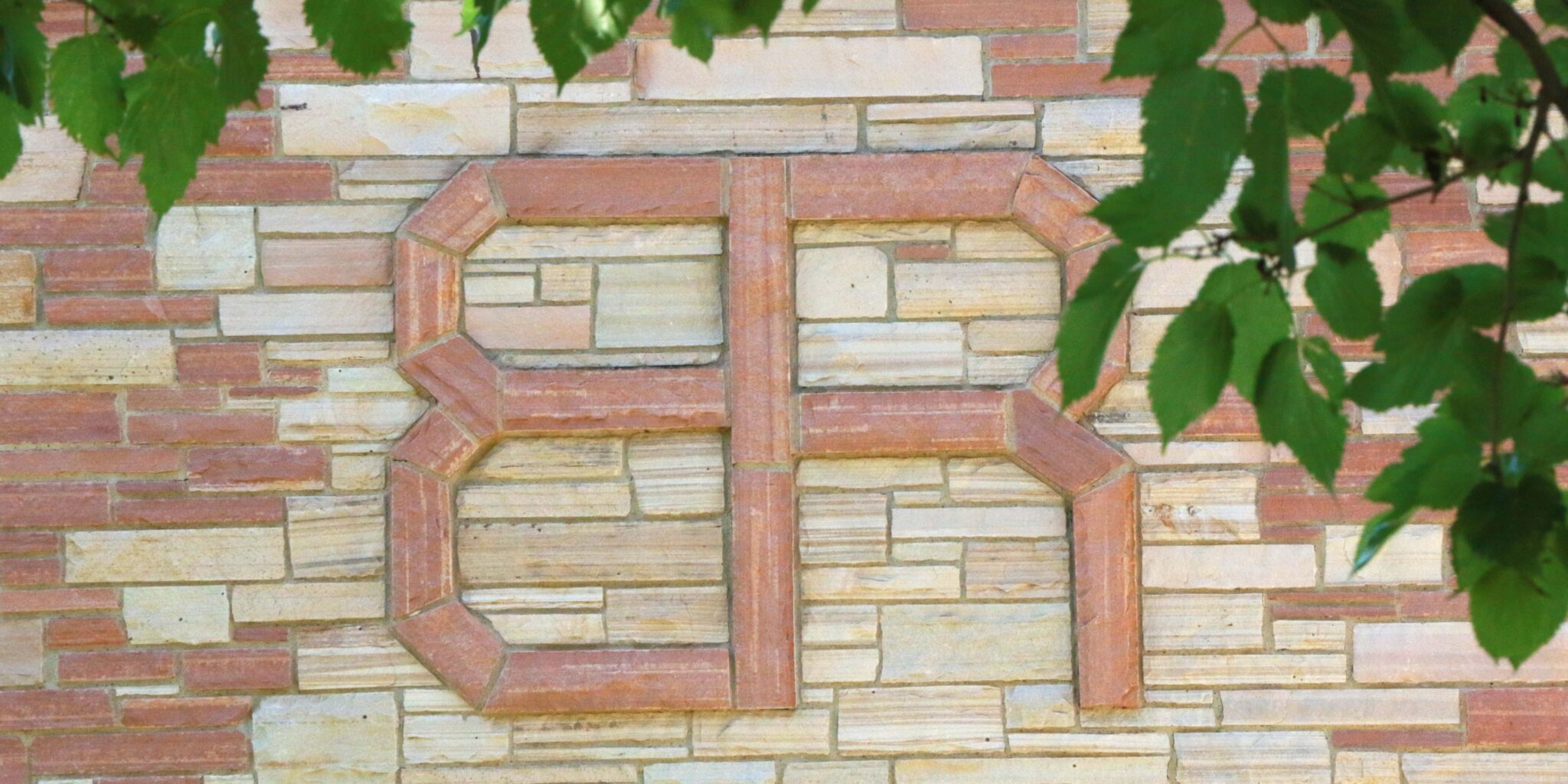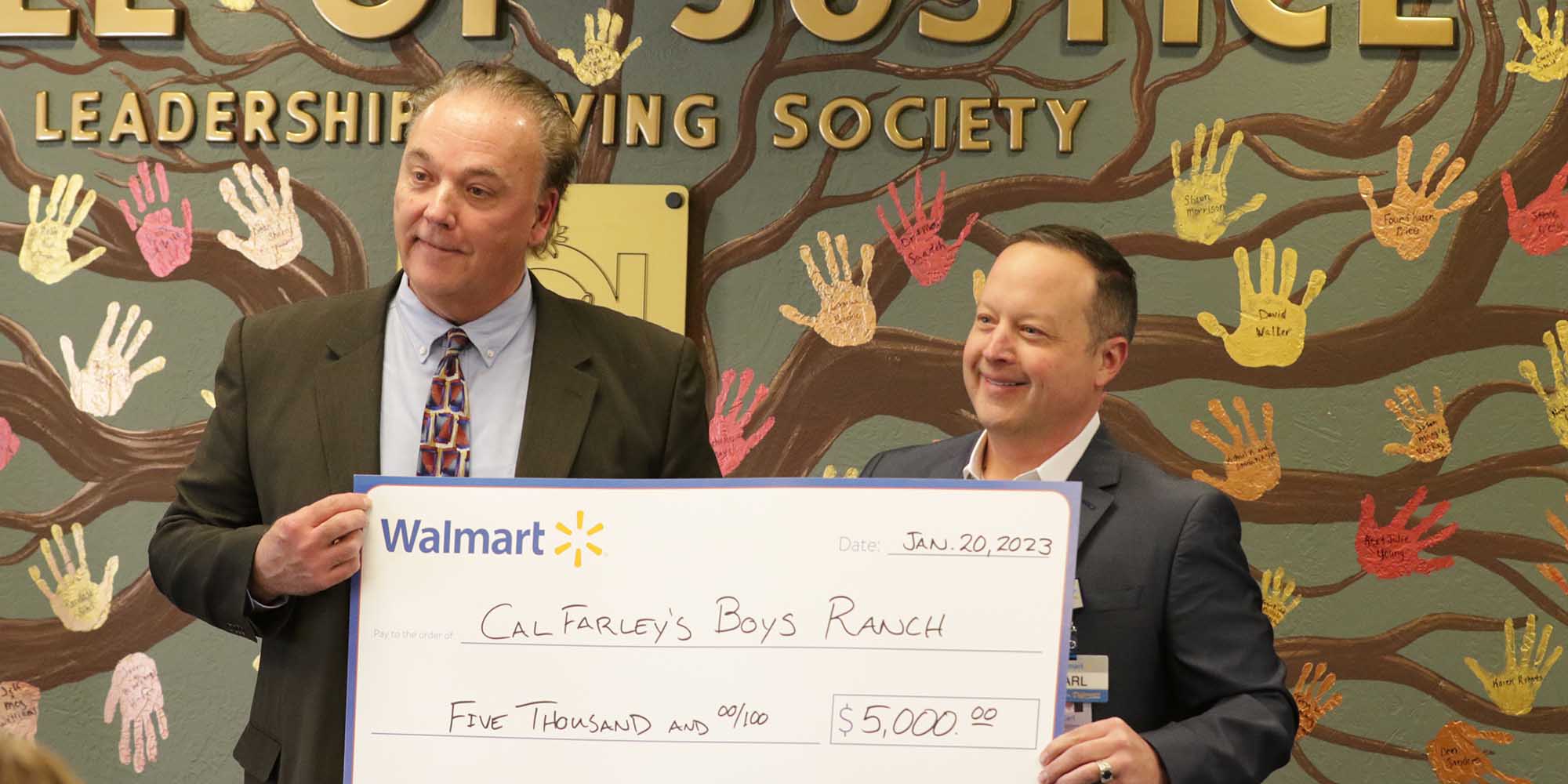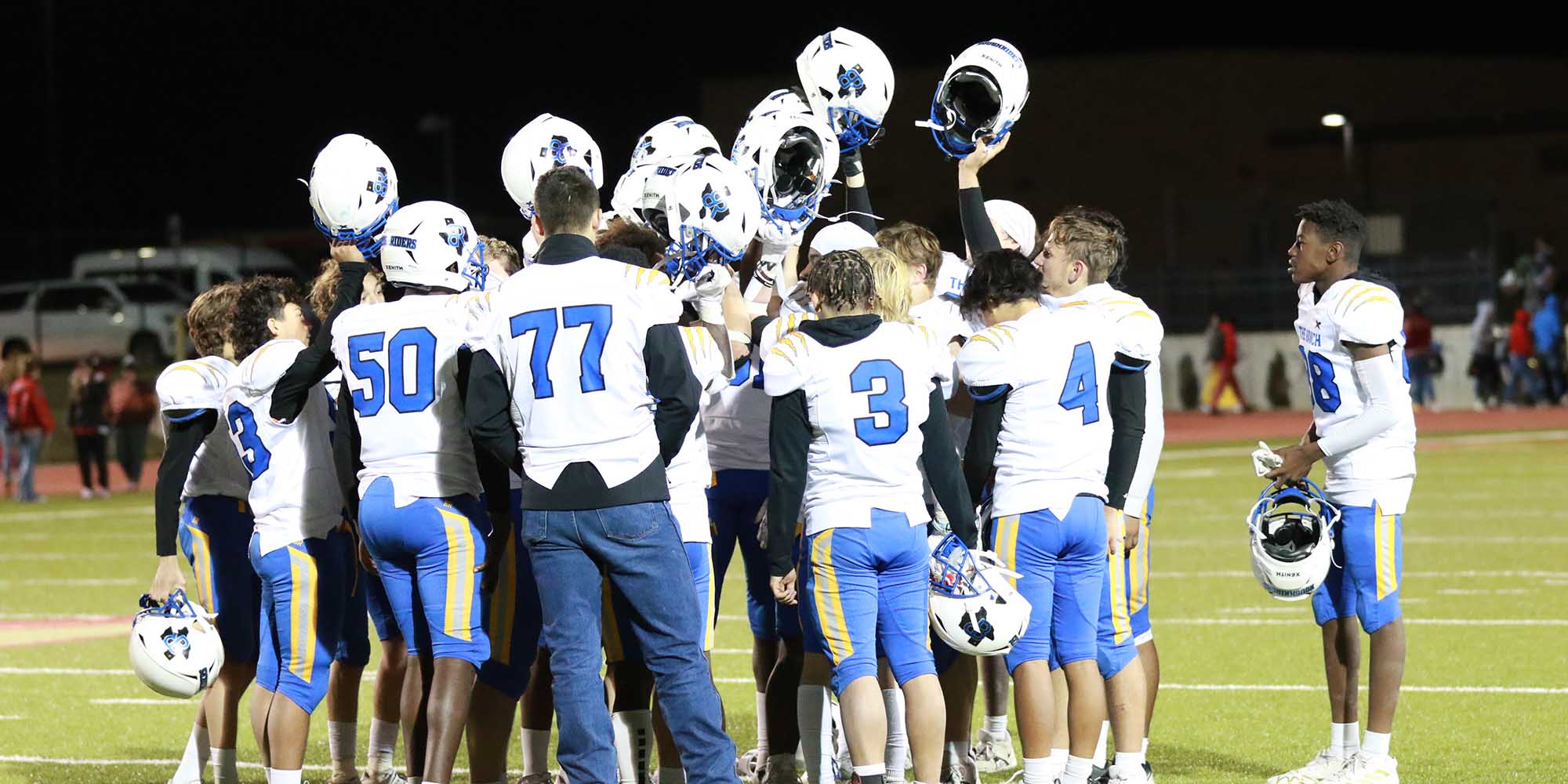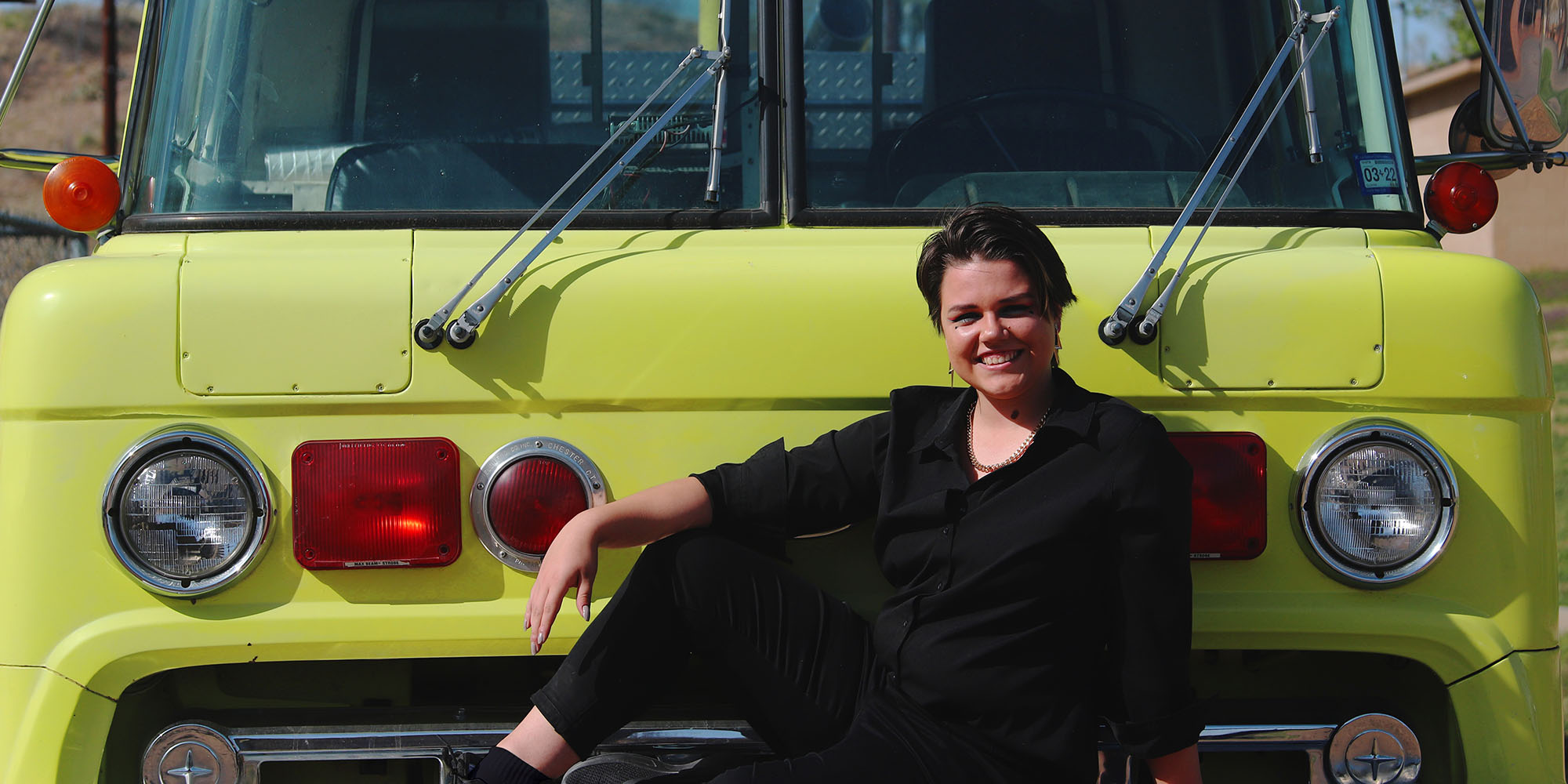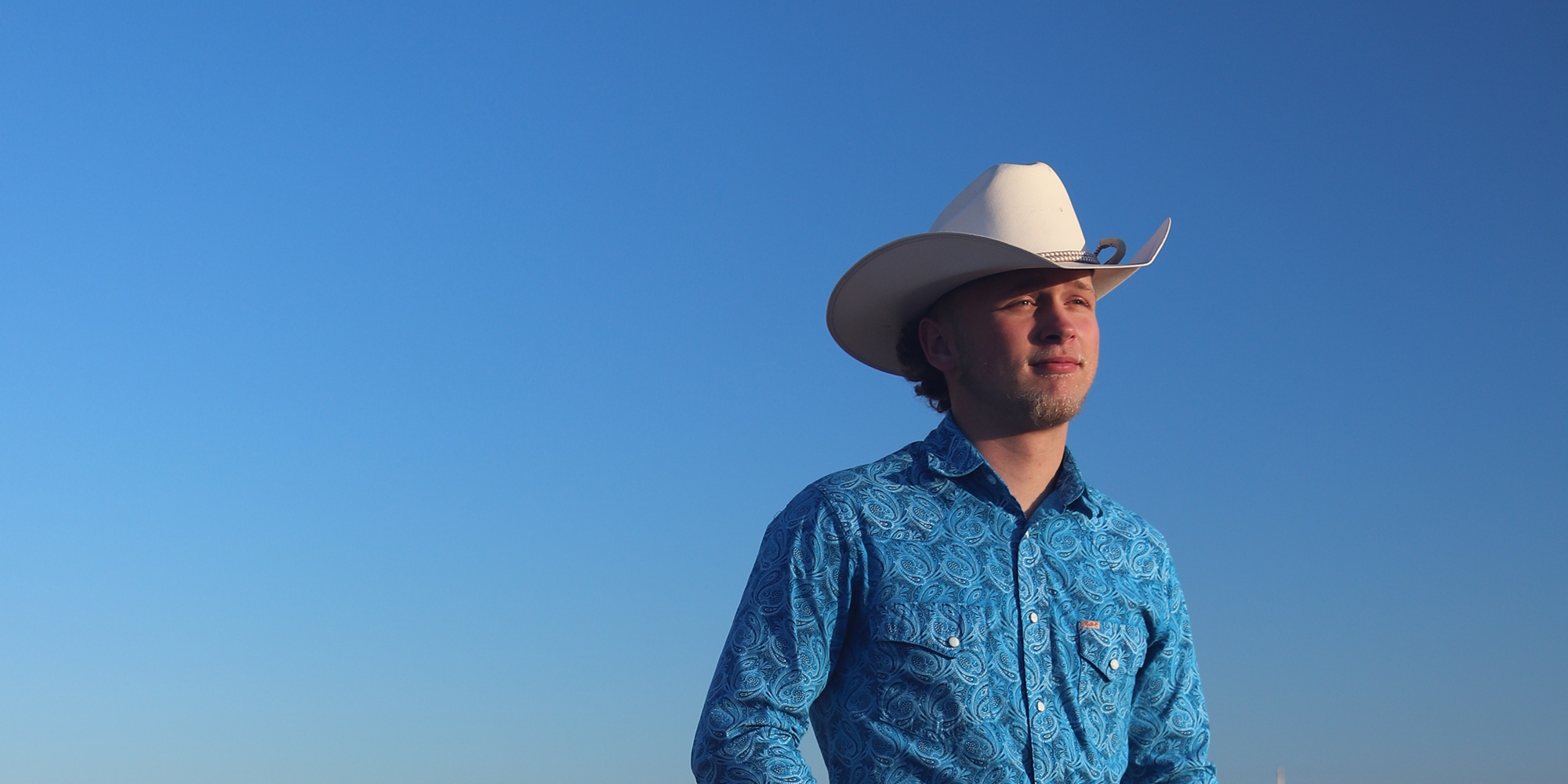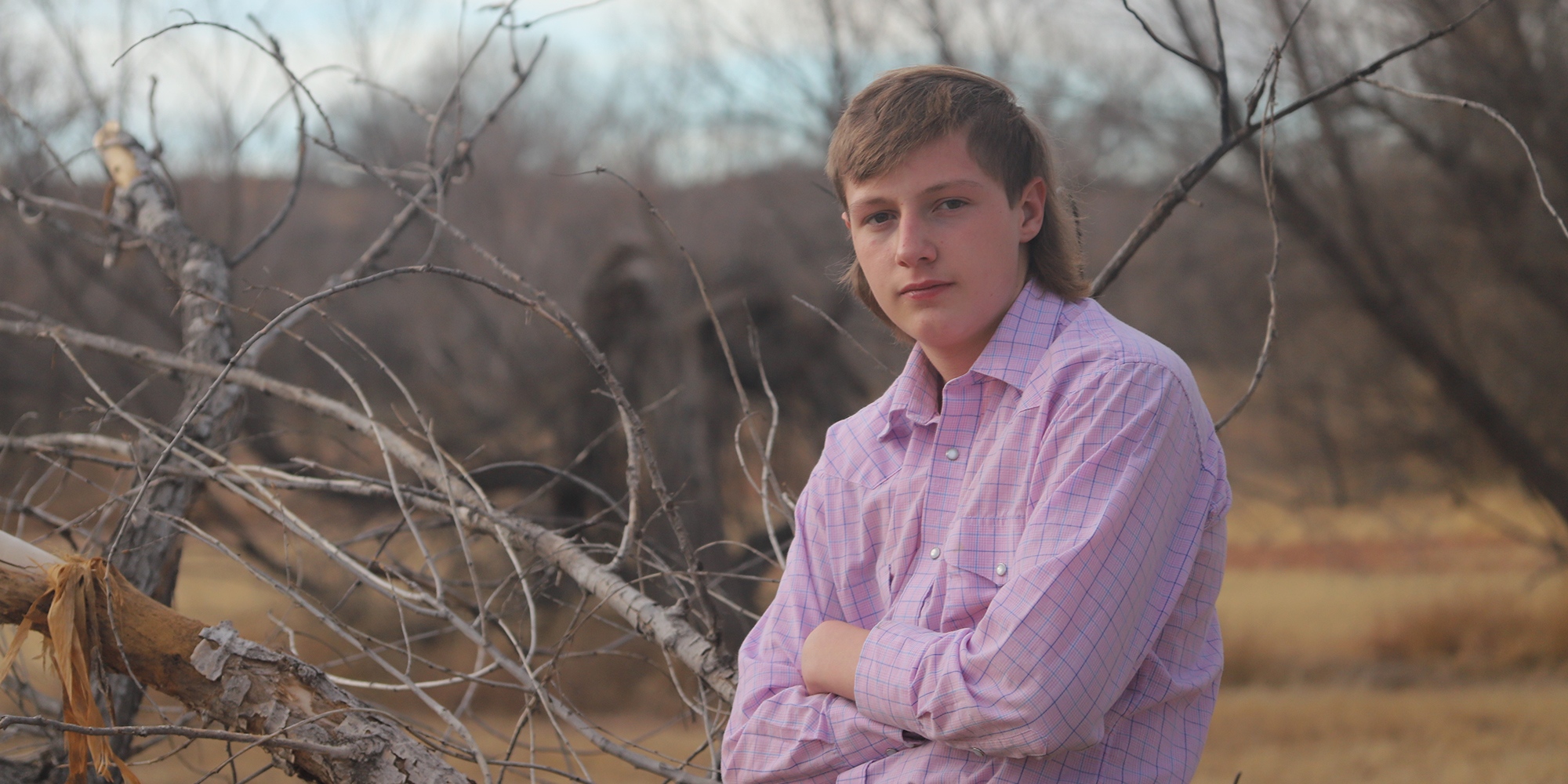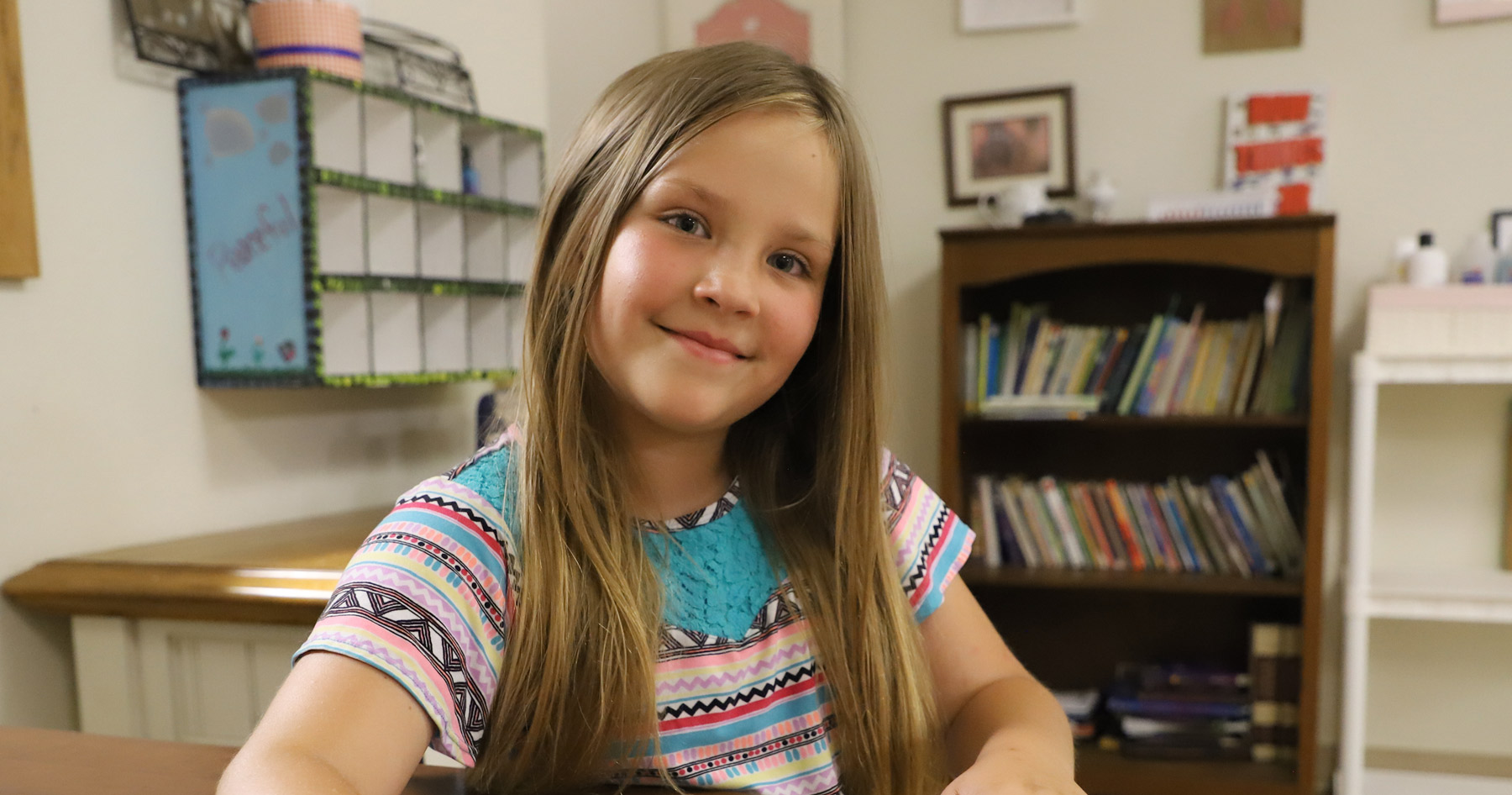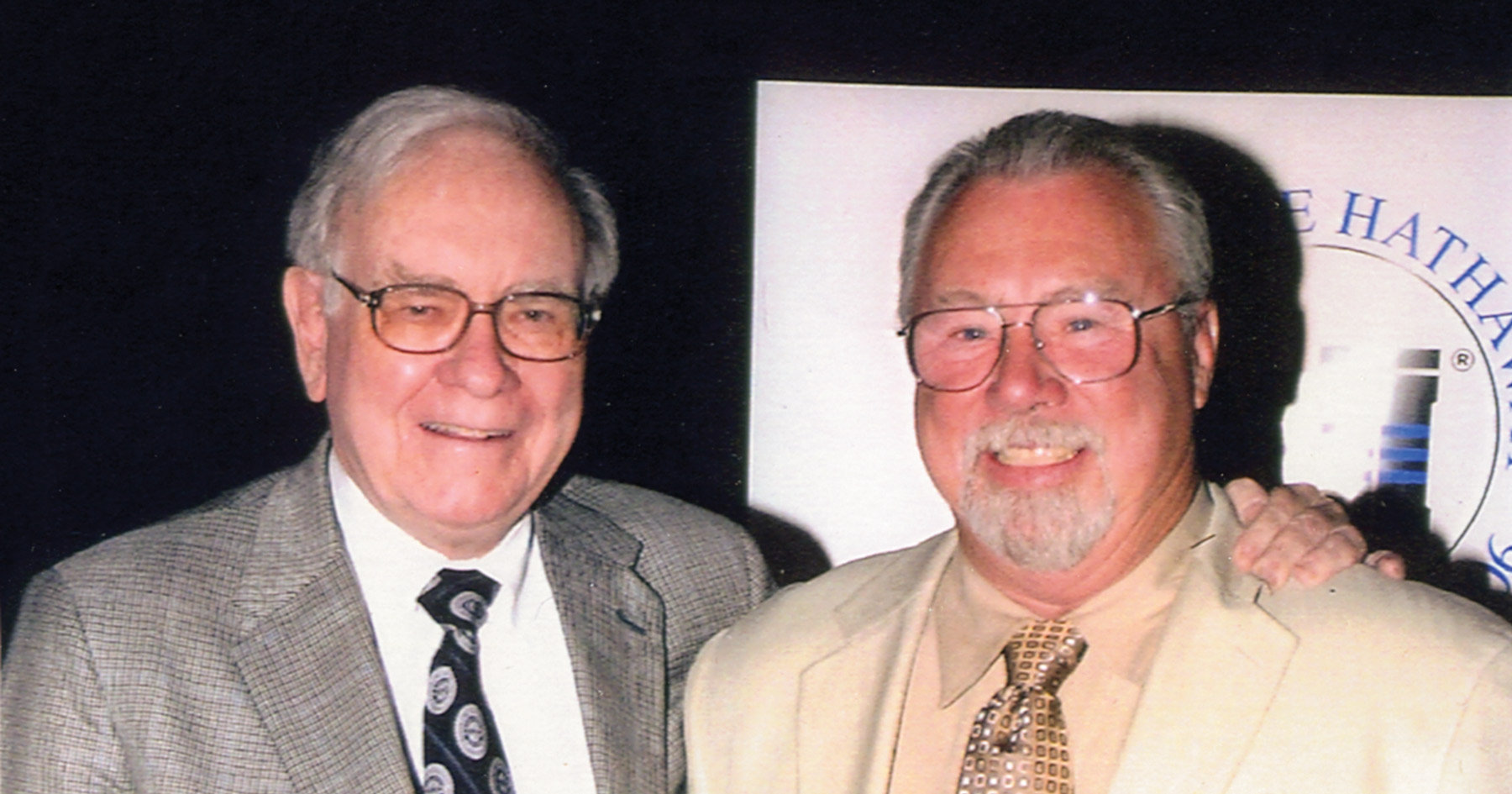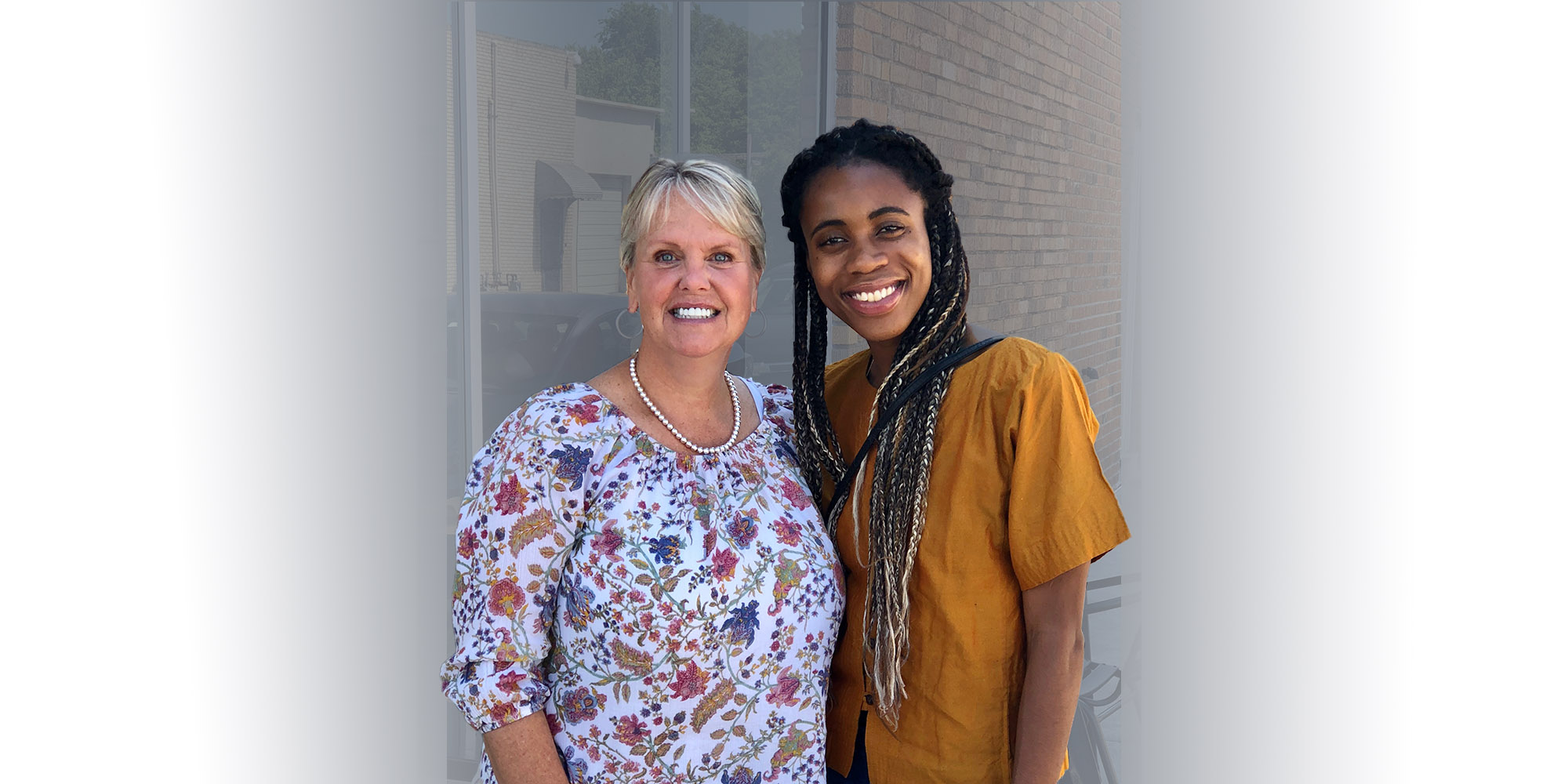
Change begins with safety
Children arrive at Boys Ranch with struggles and hurts, often through no fault of their own. They need a place to learn healthy behaviors and coping skills or a chance to recover a lost childhood, school credits or family bonds. They need the chance to become healthy and learn how to succeed in the future.
Children at Boys Ranch receive a safe place to live and ultimately to thrive — a home.
A place to call home
A model for the future
There are 28 houses on campus that typically house up to 9 children, sorted by age, gender and plan of service. Every home has two sets of trained houseparents, with one couple acting as the primary set.
Every home has a unique atmosphere depending on the young people and houseparents who live in it, but each house models a traditional American home with a living room, a kitchen, a dining room and a laundry room. Some children have their own rooms, but depending on needs, some children have roommates.
Homelife is more than just eating and sleeping: At Boys Ranch, homelife includes spending time together, taking care of the home and eating meals as a home, celebrating birthdays and major holidays, and going on outings and vacation.
A glimpse at a typical Day
Creating Consistent schedules & expectations
At Boys Ranch, youth can expect consistency in their schedules. When children know what to expect each day, they feel more secure and in control.
A normal day begins with getting ready for school, a healthy breakfast either in their home or at our dining hall, and then heading off for their day at one of three schools on campus within the Boys Ranch Independent School District.
When school is over, house parents help youth get to their selected activities, such as sports, clubs or one of our many Experiential Learning Program areas. Other afternoon and evening activities include helping prepare and then eating the home meal together. Often children play games in the homes, go on walks with their houseparents or toss a ball around.
Children at Boys Ranch are too busy to be bored!
When our young people have free time, they can enjoy many of the amenities on campus, such as fishing at one of our ponds, swimming in the indoor pool, climbing at the rock gym, bowling at the activity center or playing video games with friends.
On weekends, houseparents lead residents in recreational activities like attending school sporting events, going shopping in nearby communities, creating crafts or even popping a big bowl of popcorn to watch a movie together as a home. On Sundays, every Boys Ranch resident attends chapel services to learn about God’s love.
Example Schedules

School Year
Before 8 a.m.: Eat breakfast and get ready for school.
8 a.m. to 3:35 p.m.: School with lunch normally served at the dining hall.
3:35 to 5:30 p.m.: After-school activities like sports, clubs, homework, downtime, Experiential Learning, or spending time with friends and housemates.
5:30 to 7:30 p.m.: Dinner as a home and cleanup.
7:30 to 8:30 p.m.: Free time and prepare for bed.
8:30 p.m.: Lights out.

Summer
Before 8 a.m.: Eat breakfast and get ready for school or other daily activities.
8 a.m. to 5:30 p.m.: Attend Summer School, Recreational Programs or Experiential Learning with lunch normally served at our dining hall.
5:30 to 7:30 p.m.: Dinner as a home and cleanup.
7:30 to 8:30 p.m.: Free time, chores and prepare for bed.
8:30 p.m.: Lights out.
Who is a Houseparent?
A Supportive Guide
Houseparents are arguably one of the most important mentors within our community. Within each home, trained houseparents provide daily supervision and support to the children in their home. From helping with homework, overseeing chores and providing meals, our houseparents help create a family-like atmosphere within the home.
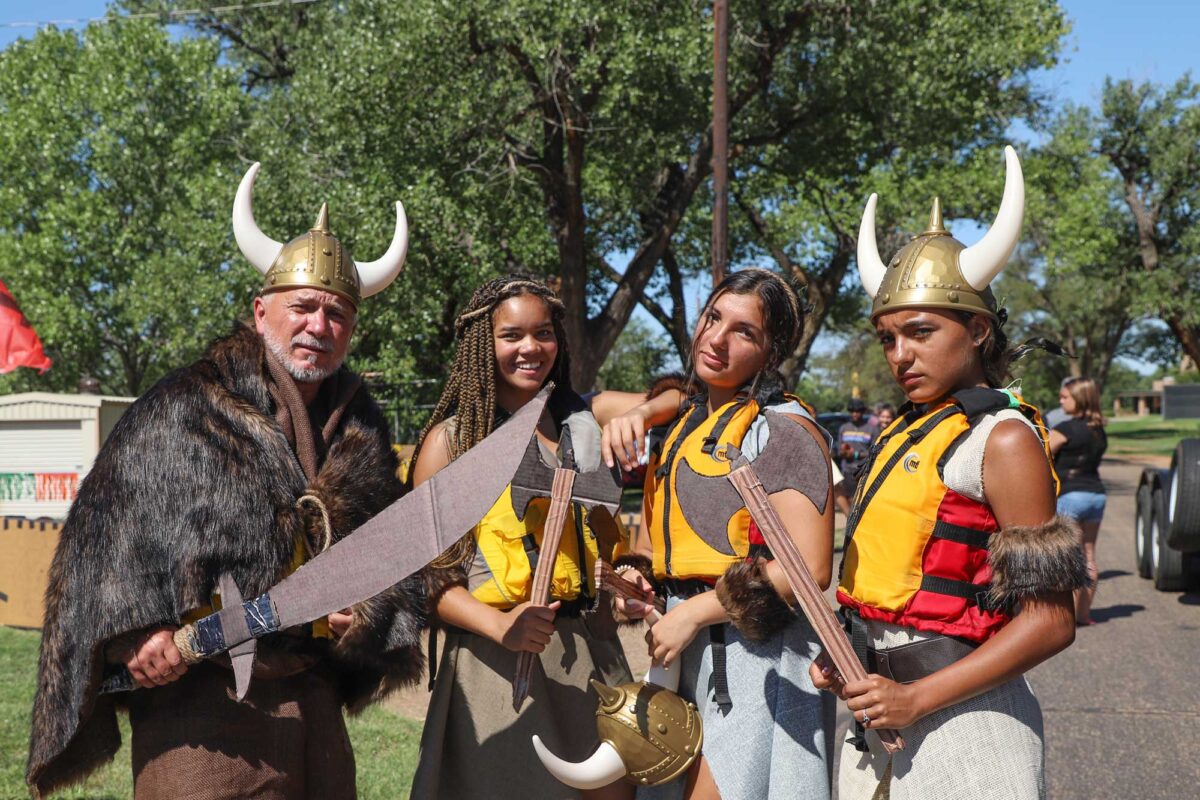
Houseparents support our youth by helping them prepare for their day, making sure they are ready for school, coordinating travel to extracurricular activities and preparing home meals.
Keeping siblings close
cultivating family bonds
At Boys Ranch, we work to keep siblings and families together. Research shows that a child with intact family bonds has a better chance of overcoming struggles.
Often, Boys Ranch can welcome more than one sibling. The living situation for each child varies depending on that child’s needs and plan of service. Siblings who are the same gender and close in age might be able to live in the same home. Siblings of different genders live in different houses. No matter the living situation, though, children are allowed and encouraged to spend time with their siblings.
In fact, we have special evenings specifically created for siblings to spend time together.
In 2018, Fischer Home had the unique opportunity to home three sets of sibling boys. The below video takes a special look at that experience.
Finding a place to call home
Stories from our Youth
Get help today
Visit Boys Ranch
Guests are welcome at Cal Farley’s historic Boys Ranch campus. We are located at the site of Old Tascosa, a pioneer town where the likes of Billy the Kid and Pat Garrett walked its dusty streets.
Since 1939, though, it has served a much different purpose. On land once known for gun fights and barroom brawls, Cal Farley’s residents learn the value of integrity, perseverance and faith in God.
All visits begin at Boys Ranch Headquarters, where guests must first check in. The safety of our residents is our first priority, so guests 18 and older will be asked to present their driver’s license or photo ID.
TOUR HOURS
Monday to Friday
from 8 a.m. to 5 p.m.
Tour reservations are requested, but not required.
Tour Highlights
Cal farley and his legacy
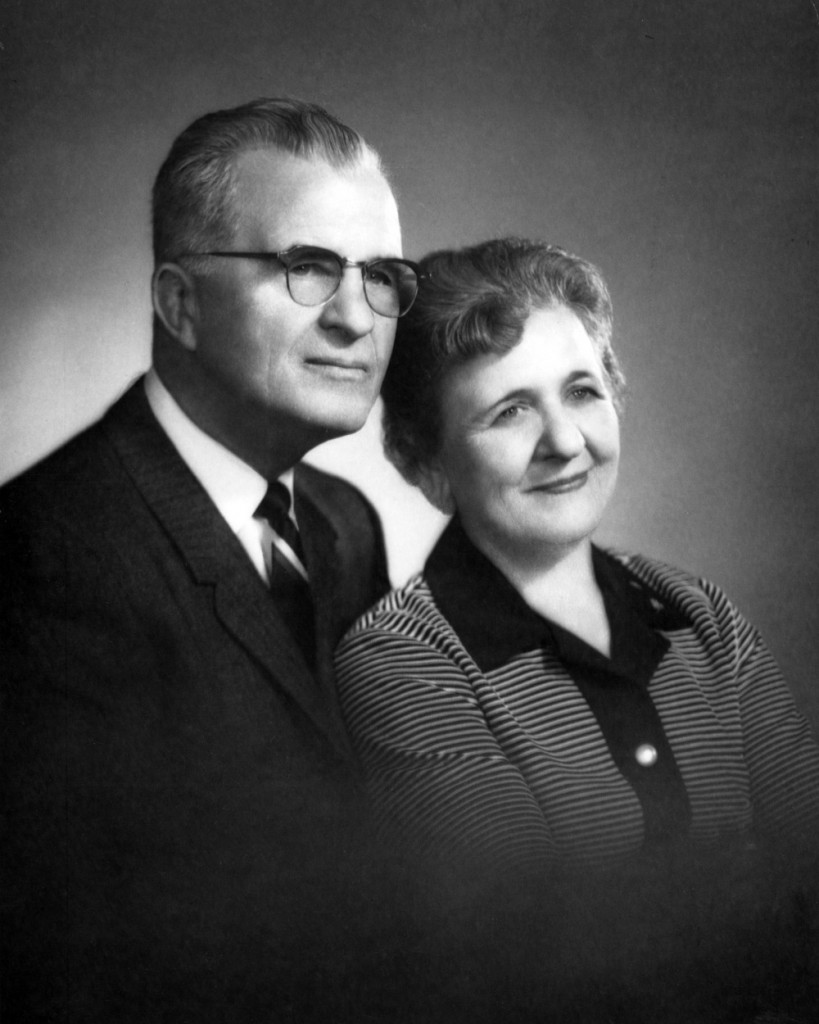
In the late 1930s, Cal Farley was playing semiprofessional baseball by day and wrestling by night in Amarillo, Texas. Mr. Farley, a World War I veteran with an engaging personality, was a fan favorite at the ballpark, where he would deliberately hit foul balls over the fence to children gathered there, knowing they could exchange these balls for a free ticket to the game. Mr. Farley realized some of these children were hanging around the ballpark when they should have been in school, and he soon found many of them came from broken homes where guidance, supervision and love often were missing.
Mr. Farley began looking for ways to help these children and, in the fall of 1938, Texas Panhandle rancher Julian Bivins agreed to support the cause. Bivins donated about 120 acres of land 36 miles northwest of Amarillo. The following March, Mr. Farley established his boys ranch at the site, which long before had been home to Tascosa, a raucous pioneer town. On land that once was known for gun fights and barroom brawls, Boys Ranch residents learned the value of integrity and an honest day’s work.
The Boys Ranch population quickly grew and, in 1944, Mr. Farley sought to bolster the boys’ social education by hosting a rodeo. About one hundred people showed up, but the idea took root. Now, thousands attend the annual Boys Ranch Rodeo.
Boys Ranch programs expanded to include girls. Yet still, we hold true to the values set over seven decades and prepare young people to become responsible citizens
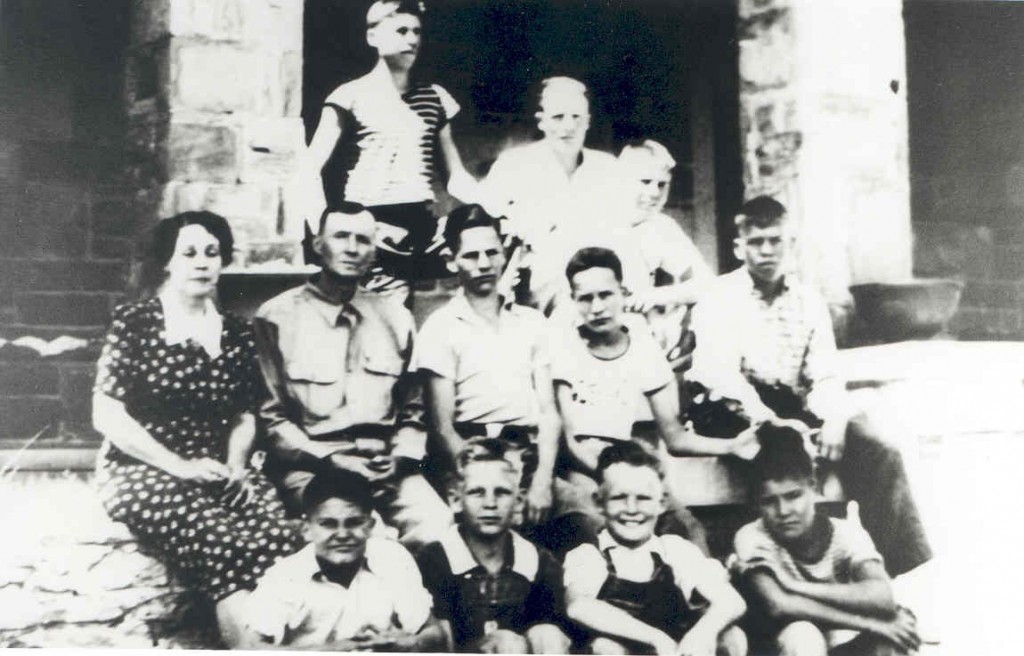
Residential Community
We hear these words time and time again: “This place has to be seen to be believed, it’s incredible!” For those who’ve never visited our beautiful, historic campus, here’s a look at where our life-changing work happens. If you ever find yourself in the Texas Panhandle, we’d love to show you around.
Boot Hill Cemetery
Boot Hill Cemetery was named after the cemeteries in Dodge City Kansas and Tombstone Arizona. But unlike those, Tascosa’s Boot Hill was actually located on a hill overlooking the town. Fred Leigh was the first to inhabit the cemetery, after being shot out of his saddle by Tascosa’s first Sheriff, Cape Willingham, for shooting the head off of a duck!
Julian Bivins Museum
Located in the original Tascosa courthouse serving Oldham County, the Julian Bivins Museum contains historical artifacts from Boys Ranch and Old Tascosa.
Tascosa was known as the “Cowboy Capital of the Plains” and was the rowdy home of settlers, cowboys, cattle thieves and lawmen.
The area provides an easy point to cross the Canadian River and an abundant source of drinking water from Atascosa Creek. This made Tascosa an ideal place for settlement first by Native Americans, then Spanish Pastores, and later large cattle ranches.
Tascosa was one of the first established towns in the Texas Panhandle region. The courthouse, built in 1884, served up to twelve counties.
Bypassed by the railroad, Tascosa fell from prominence and became a shadow of its once raucous self, only to be reimagined as a home for at risk children. In the early days of Cal Farley’s Boys Ranch the courthouse served as a home for the first nine boys to live at the Ranch.


Cal farley and his legacy

In the late 1930s, Cal Farley was playing semiprofessional baseball by day and wrestling by night in Amarillo, Texas. Mr. Farley, a World War I veteran with an engaging personality, was a fan favorite at the ballpark, where he would deliberately hit foul balls over the fence to children gathered there, knowing they could exchange these balls for a free ticket to the game. Mr. Farley realized some of these children were hanging around the ballpark when they should have been in school, and he soon found many of them came from broken homes where guidance, supervision and love often were missing.
Mr. Farley began looking for ways to help these children and, in the fall of 1938, Texas Panhandle rancher Julian Bivins agreed to support the cause. Bivins donated about 120 acres of land 36 miles northwest of Amarillo. The following March, Mr. Farley established his boys ranch at the site, which long before had been home to Tascosa, a raucous pioneer town. On land that once was known for gun fights and barroom brawls, Boys Ranch residents learned the value of integrity and an honest day’s work.
The Boys Ranch population quickly grew and, in 1944, Mr. Farley sought to bolster the boys’ social education by hosting a rodeo. About one hundred people showed up, but the idea took root. Now, thousands attend the annual Boys Ranch Rodeo.
Boys Ranch programs expanded to include girls. Yet still, we hold true to the values set over seven decades and prepare young people to become responsible citizens

Residential Community
We hear these words time and time again: “This place has to be seen to be believed, it’s incredible!” For those who’ve never visited our beautiful, historic campus, here’s a look at where our life-changing work happens. If you ever find yourself in the Texas Panhandle, we’d love to show you around.
Boot Hill Cemetery
Boot Hill Cemetery was named after the cemeteries in Dodge City Kansas and Tombstone Arizona. But unlike those, Tascosa’s Boot Hill was actually located on a hill overlooking the town. Fred Leigh was the first to inhabit the cemetery, after being shot out of his saddle by Tascosa’s first Sheriff, Cape Willingham, for shooting the head off of a duck!
Julian Bivins Museum
Located in the original Tascosa courthouse serving Oldham County, the Julian Bivins Museum contains historical artifacts from Boys Ranch and Old Tascosa.
Tascosa was known as the “Cowboy Capital of the Plains” and was the rowdy home of settlers, cowboys, cattle thieves and lawmen.
The area provides an easy point to cross the Canadian River and an abundant source of drinking water from Atascosa Creek. This made Tascosa an ideal place for settlement first by Native Americans, then Spanish Pastores, and later large cattle ranches.
Tascosa was one of the first established towns in the Texas Panhandle region. The courthouse, built in 1884, served up to twelve counties.
Bypassed by the railroad, Tascosa fell from prominence and became a shadow of its once raucous self, only to be reimagined as a home for at risk children. In the early days of Cal Farley’s Boys Ranch the courthouse served as a home for the first nine boys to live at the Ranch.


